Why cauliflower doesn't tie heads and what to do
In the natural environment, there is no analogue of cauliflower. This is the answer to the question of why cauliflower is not tied up in a summer cottage or a backyard farm. It was first cultivated in Syria, its spread to Europe, Asia and Russia began several centuries ago. Later, several varieties were created, adapted to life in harsh cultural conditions. They stably turn into color, and soon a curly head of a dietary plant appears on the site.
An unusual feature of the culture is that the roots or the fruit are not eaten. Of interest for the gardener is the unopened inflorescence, which is formed from the ovary. The normal development of a plant stops at a certain stage, continuing its growth in a certain proportion. We see the formation of the stem and inflorescence. It is framed by lush leaves that protect it from the effects of adverse environmental factors.
general information
So why isn't cauliflower tied up and what to do in this case? What measures need to be taken and what to look for first of all?
It is necessary to take into account the nuances of the growth of cauliflower, which must be grown taking into account several factors:
- Seeds. It is impossible to see what is inside the beautiful bag. Here you can rely on luck and good knowledge of the cultivation of a particular crop. How quickly the growth will go, the formation of a general shape, and for the fetus - the initial setting of inflorescences - this is already half the success for such a capricious plant. The only thing a novice gardener can come up with is to carefully look at the description of the variety and read about the features of growing a crop.
- Care. Some gardeners use the expression heads of cabbage or stump, which is fundamentally wrong. We have a set inflorescence, which is the goal of any gardener. Plant care consists in carefully following the instructions for growing a particular variety.
- Temperature. Some crops do not develop well at temperatures above +18 degrees. If the temperature regime is observed, the ovary is well formed, growth slows down somewhat, but stability appears.

- Humidity. The culture grows well at normal humidity in the range of 40 - 60 percent. We are talking about adapted varieties, including early ones, adapted to the conditions of Europe or Asia.
- Watering. Watering the plant regularly will guarantee good development: cauliflower does not like drought - it is a moisture-loving plant. It consumes a lot of water from the soil to form strong leaves, stems and flowers. We need to carefully consider this issue. It is necessary to grow a plant without losing the head, otherwise the time for its formation will be irretrievably lost.
- Fertilizers.If the inflorescences are not tied, they begin to overfeed the plant with various fertilizers. This is the main mistake of many novice gardeners. Lack of nutrients in the soil for the head of cabbage is not a hindrance, but an excess leads to the active formation of lateral leaves, which are not eaten. You can make an optimal feeding schedule - in this case, the tied inflorescences will develop steadily.
After the formation of flowers, it is recommended to pay attention to the formation of the head. Direct rays of the sun can damage the plant. Protect cabbage from direct sunlight. You just need to break the top rosette foliage and direct it towards the center.
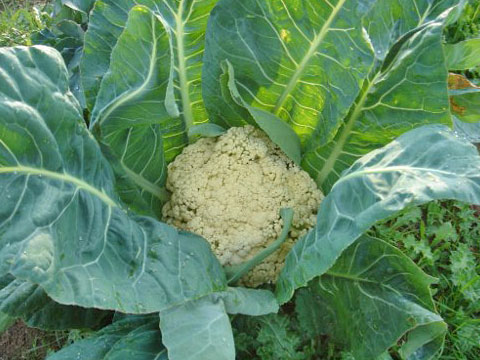
In this case, sunlight goes to the side of the cabbage and is partially scattered. But usually they use a less traumatic method, tying foliage in the center of the head, observing the further growth of the culture.
Beneficial features
Several centuries ago, Syrian cabbage could be seen on the table of wealthy people. It was inaccessible to ordinary workers, since it could not be stably tied, and its cultivation became time-consuming. The beneficial properties of an exotic guest from distant Syria were already appreciated at their true worth, because cabbage has practically no contraindications. Previously, it was difficult to grow a culture, in particular, to choose the conditions under which the inflorescences will tie.
Today, cauliflower is a popular choice in many restaurants, cafes and diet food outlets. Thanks to the efforts of breeders, it can be grown on a private farm and eaten along with other vegetables and fruits. Like its sister, white cabbage, cauliflower is part of many dishes.
It is fried, stewed, baked with cheese, marinated and even cutlets are made. It is especially useful for lovers of diet food: the inflorescences that have set contain a small amount of calories and a whole set of minerals and vitamins.
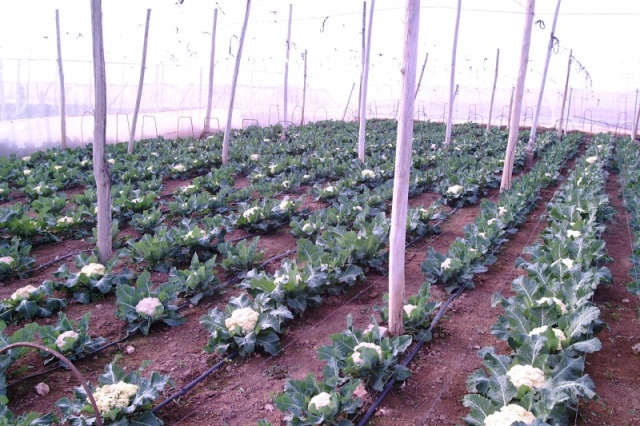
In terms of nutrient content, cauliflower is capable of completely covering the daily intake of the human body. It is important for gardeners to know the conditions under which the inflorescences were tied, and to follow the rules for maintaining the culture.
Ensuring the harmonious development of cauliflower, good indicators of nutrients are achieved:
- Vitamin A. Under normal conditions, the body will begin to observe improvements in the functioning of the immune system. Essential for the proper functioning of vision.
- Vitamins of group B. It is recommended to start taking these vitamins when weakness in the body appears. In order for lethargy, drowsiness, vigor and desire to work appear, a full-fledged metabolism is necessary. B vitamins release energy at the cellular level.
- Vitamin C. Plants grow with a small amount of vitamin C. You can define it by taste: when eaten, you can feel the sour taste of the product.
- Vitamin E. An excellent antioxidant. Helps to correct the situation with cancer cells in the body, participates in oxidative processes. Protects cells from damage.
- Vitamin H (biotin). Helps with disorders of the nervous system, prevents the causes of depression. Regulates the metabolism of proteins and fats in the body.
- Vitamin U. Promotes tissue regeneration in the event of ulcers of internal organs.
A number of micro and macro elements are found in the curly head of this unusual plant. All this is formed as a result of a complex of cultivation measures, which includes crop irrigation.
It is not recommended to water cabbage by sprinkling - I attribute this limitation to the presence of a large area of lateral foliage. Drops of moisture remain on it, which, when irradiated by sunlight, concentrate the rays into one narrow beam, as a result of which the surface of the foliage pgrows through.

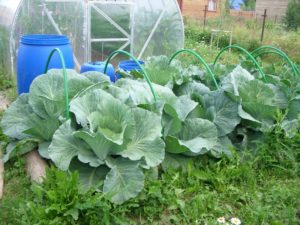
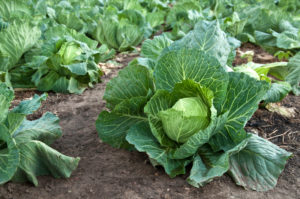


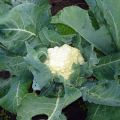
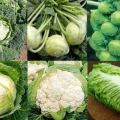
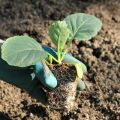
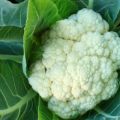
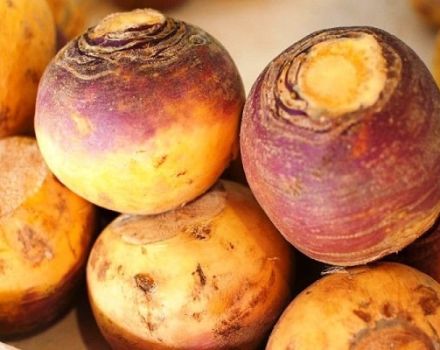
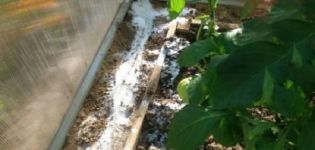
Last year I didn't feed cauliflower with anything. Today I fed with BioGrow. The result is much better than last year. Cabbage is much larger during growth. I recommend using BioGrow. The result is good. I bought it in this store.